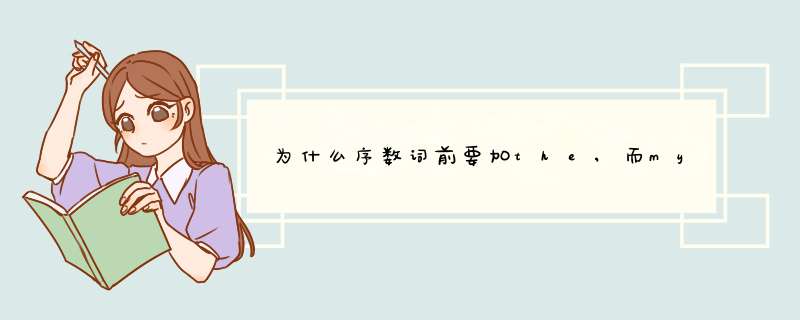
the的用法如下:
1、(指已提到或易领会到的人或事物)
used to refer to sb/sth that has already been mentioned or is easily understood
There were three questions The first two were relatively easy but the third one was hard
有三个问题。头两个相对容易,第三个困难。
There was an accident here yesterday A car hit a tree and the driver was killed
昨天这里发生了一起事故。一辆小轿车撞到树上,驾车的人死了。
The heat was getting to be too much for me
天气热得快让我受不了了。
The nights are getting longer
夜越来越长。
2、(指独一无二的、正常的或不言而喻的人或事物)
used to refer to sb/sth that is the only, normal or obvious one of their kind
the Mona Lisa
《蒙娜丽莎》
the Nile
尼罗河
the Queen
女王
What's the matter
怎么回事?
The phone rang
电话铃响了。
I patted her on the back
我拍了拍她的背。
How's the (= your) baby
宝宝好吗?
3、(解说时用)
used when explaining which person or thing you mean
the house at the end of the street
街尽头的房子
The people I met there were very friendly
我在那里遇到的人很友善。
It was the best day of my life
这是我一生中最美好的一天。
You're the third person to ask me that
你是第三个问我那件事的人。
Friday the thirteenth
十三号,星期五
Alexander the Great
亚历山大大帝
4、(用以泛指)
used to refer to a thing in general rather than a particular example
He taught himself to play the violin
他自学拉小提琴。
The dolphin is an intelligent animal
海豚是聪明的动物。
They placed the African elephant on their endangered list
他们把非洲大象列为濒危动物。
I heard it on the radio
我从收音机里听到了这件事。
I'm usually out during the day
白天我通常不在家。
5、(与形容词连用,指事物或统称的人)
used with adjectives to refer to a thing or a group of people described by the adjective
With him, you should always expect the unexpected
在他身上你应随时料到有意想不到的事情发生。
1、A waiter came and hovered John caught my look and we both got up and, ignoring the waiter, made our way to the buffet
一个侍者走了过来,候在附近。约翰领会了我的眼神,我们两个都站了起来,没有理睬那个侍者,朝自助餐台走去。
2、There has been a slight increase in the consumption of meat
肉类消费量略有增长。
3、It's always hard to speculate about the future
未来一向很难预测。
4、The doctor's on his way
医生正在路上。
5、'How's the family' — 'Just fine, thank you'
“家里人都好吧?”——“都好,谢谢。”
the east 东方;the west 西方;the right 右边;the left 左边
注意:方位词成对使用构成平行结构时,不用定冠词。
The river is two thousand miles long from east to west
用在序数词前
定冠词用在序数词前,也用在表示序列的next, last 等前,还有表示“同一”或“唯一”的词前。如:
He is the only person who knows the secret他是唯一知道这个秘密的人。
This is the very book I want 这正是我要的书。(用very 表示强调)
注意:序数词表示“又一”时,前面用不定冠词 a/an。
He bought a second pair of shoes 他又买了一双鞋。
用在乐器名词前,表示演奏
She can play the piano/violin/guitar
用在江河,海洋,湖泊,群岛,山脉的名称前
the Yangtze River 长江; the West Lake 西湖;the Pacific 太平洋;the Rocky Mountains落基山脉
用在普通名词和另外一些词构成的专有名词前
the Great Wall 长城;the United Nations 联合国;the New York Times 《纽约时报》
用在某些形容词前表示一类人或物或某种抽象概念。
The old 老年人;the poor 穷人;the beautiful 美的东西
注意:表示人的时候做主语,应看成复数意义;当表示物的时候应看成不可数意义。
用在姓氏的复数形式前,表示全家人,夫妇二人。
The Greens will move to the country格林一家要搬到乡下去。
用在表示计算单位的名词前,含有“每一”的意思。
John is paid by the hour 吉母的工资按小时付。
用在前面已提到的人的身体部位或衣着的名词前。
这种用法是先把整个对象说出来,然后再说到那个对象身体的局部或衣着。
动词(hit,pull,pat,strike,catch,hold,take,lead)+sb介词(in,on,by,across)+身体部位或衣着
She touched him on the shoulder 她碰了他的肩。
注意:She patted the boy on his head (误,本结构中身体部位或衣着前不用one's)
She patted the boy on the head (正)
用在逢十的复数数词前,表示年代
The war broke out in the forties 那场战争发生在40年代。
用在表示自然现象的名词前
the rain; the wind; the fog; the snow; the air
注意:①这类名词有形容词修饰时,可用不定冠词,表示“一场,一阵,一种”。
There was a heavy rain last night 昨晚下了一场大雨。
②这类名词表示一般物质时,不用冠词。
Man can not live without air 没有空气人无法生存。
用在某些习惯用语中
in the morning; in the evening; in the field ; in the country; in the sun; in the distance; on the right; by the way; in the daytime; go to the concert; at the beginning ; all the year round;等等。
注意:下面几个短语前不加定冠词:
at dawn 在黎明 at night 在晚上 at noon 在正午
at dusk 在黄昏
It seemed that sitting in the chair and looking at the blackbarod are the only way to receive the knowledge中the knowledge的the是要的,就比如
1The knowledge of the format is not in the parser but in the model, which is eitheraccessed directly by the parser at run time, or generated into code that the parserinvokes
有关格式的知识不在解析器中,而是在模型中,模型可由解析器在运行时直接访问,或者将其生成为解析器可调用的代码。
I like the color of this coat here 中可以说I like this coat here for color,因为两句的意思都是我喜欢这件外套的颜色,只是把the换成了for,差不多的吧
1、this
/
it
is
the
third
time
that
you
have
been
late
this
month
定语从句:that指代time,需要在从句中充当主语、宾语或表语,you
have
been
late
this
month是主系表结构,主语和表语都有,说明that不是句中的任何成分。如果把这个句子改为it
is
the
third
time
(that)
you
have
been
late
this
month
(for),that成为介词for的宾语,就变成了定语从句。不过这种说法很拗口,没有人这样讲。
主语从句:it是先行主语(注意:this不能作先行主语),目的是平衡句子结构,也可以改回到that
you
have
been
late
this
month
is
the
third
time。显然that
you
have
been
late
this
month(你本月已经迟了)和the
third
time(第三次)不是同一个概念,也就是说“你迟了”是个事实,一个事实不能等于次数。
同位语从句:that
you
have
been
late
this
month是对the
third
time的内涵做出解释的,意思是这是第三次,换句话说就是你本月迟到这个事实的第三次。因此这里是同位语从句。
强调句:可以取消强调句式it
is
…
that,恢复成you
have
been
late
this
month
the
third
time,但是the
third
time不能直接作状语,必须加上介词for才能成立。
固定句型:固定句型也得符合语法,这是解释不清道理时常常使用的一种托词。
2、the
second
/
the
first
time
用作主语、宾语或表语时不用for,用作状语时前面必须加上介词for。for
the
first
time
/
for
the
second
time
和for
the
last
time
/
for
the
next
time
是同一系列的副词短语,last
time与next
time、another
time另外系列的副词短语,二者不能混淆。
以上就是关于the的用法全部的内容,包括:the的用法、英语中the的使用、为什么序数词前要加the,而my first time(我的第一次)不用加the等相关内容解答,如果想了解更多相关内容,可以关注我们,你们的支持是我们更新的动力!
欢迎分享,转载请注明来源:内存溢出

 微信扫一扫
微信扫一扫
 支付宝扫一扫
支付宝扫一扫
评论列表(0条)